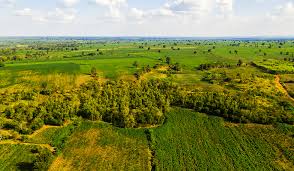Land management encompasses a range of practices aimed at maximizing the use of land resources while ensuring sustainability and environmental stewardship. This article explores essential strategies and practices in land management that promote sustainable development, preserve natural ecosystems, and optimize land productivity.
Importance of Land Management
Effective land management is crucial for:
- Sustainable Development: Balancing economic growth with environmental conservation to meet current needs without compromising future generations.
- Resource Optimization: Maximizing the potential of land resources for agriculture, forestry, urban development, and conservation purposes.
- Ecosystem Preservation: Protecting biodiversity, natural habitats, and ecosystem services provided by land areas.
Key Practices in Land Management
- Land-Use Planning:
- Zoning: Designating areas for specific purposes such as residential, commercial, industrial, agricultural, and conservation to optimize land use.
- Spatial Planning: Mapping out land areas based on ecological, economic, and social considerations to minimize conflicts and promote sustainable development.
- Natural Resource Management:
- Water Resources: Implementing efficient irrigation systems, rainwater harvesting, and watershed management to conserve water resources and prevent soil erosion.
- Soil Conservation: Adopting practices like crop rotation, cover cropping, and terracing to enhance soil fertility, prevent erosion, and improve agricultural productivity.
- Biodiversity Conservation:
- Habitat Restoration: Rehabilitating degraded ecosystems and establishing protected areas to preserve biodiversity and support wildlife habitats.
- Species Protection: Implementing measures to protect endangered species and promote habitat connectivity for wildlife conservation.
- Sustainable Agriculture and Forestry:
- Agroforestry: Integrating trees and crops to optimize land productivity, conserve soil, and enhance biodiversity.
- Forest Management: Adopting sustainable logging practices, reforestation, and forest certification to maintain forest health and ecosystem services.
- Urban Planning and Development:
- Smart Growth: Promoting compact, mixed-use development to reduce urban sprawl, preserve green spaces, and promote sustainable transportation.
- Green Infrastructure: Incorporating parks, green roofs, and urban gardens to mitigate urban heat islands, improve air quality, and enhance quality of life.
Benefits of Sustainable Land Management
Implementing sustainable land management practices offers numerous benefits:
- Environmental Benefits: Preserves natural resources, reduces pollution, and mitigates climate change impacts.
- Economic Benefits: Enhances land productivity, reduces production costs, and increases property values through sustainable development.
- Social Benefits: Improves community resilience, promotes equitable access to resources, and enhances overall quality of life.
Challenges and Considerations
- Policy and Regulation: Effective implementation of land management practices requires supportive policies, regulations, and incentives at local, national, and international levels.
- Stakeholder Engagement: Collaboration among government agencies, private sector, communities, and NGOs is essential for successful land management initiatives.
Conclusion
Essential practices in land management are vital for achieving sustainable development goals, conserving natural resources, and optimizing land use efficiency. By adopting strategies such as land-use planning, natural resource management, biodiversity conservation, and sustainable agriculture, stakeholders can promote environmental stewardship, economic prosperity, and social well-being. Embracing sustainable land management practices is key to ensuring a resilient and thriving future for generations to come, balancing human needs with the preservation of Earth’s precious ecosystems.








